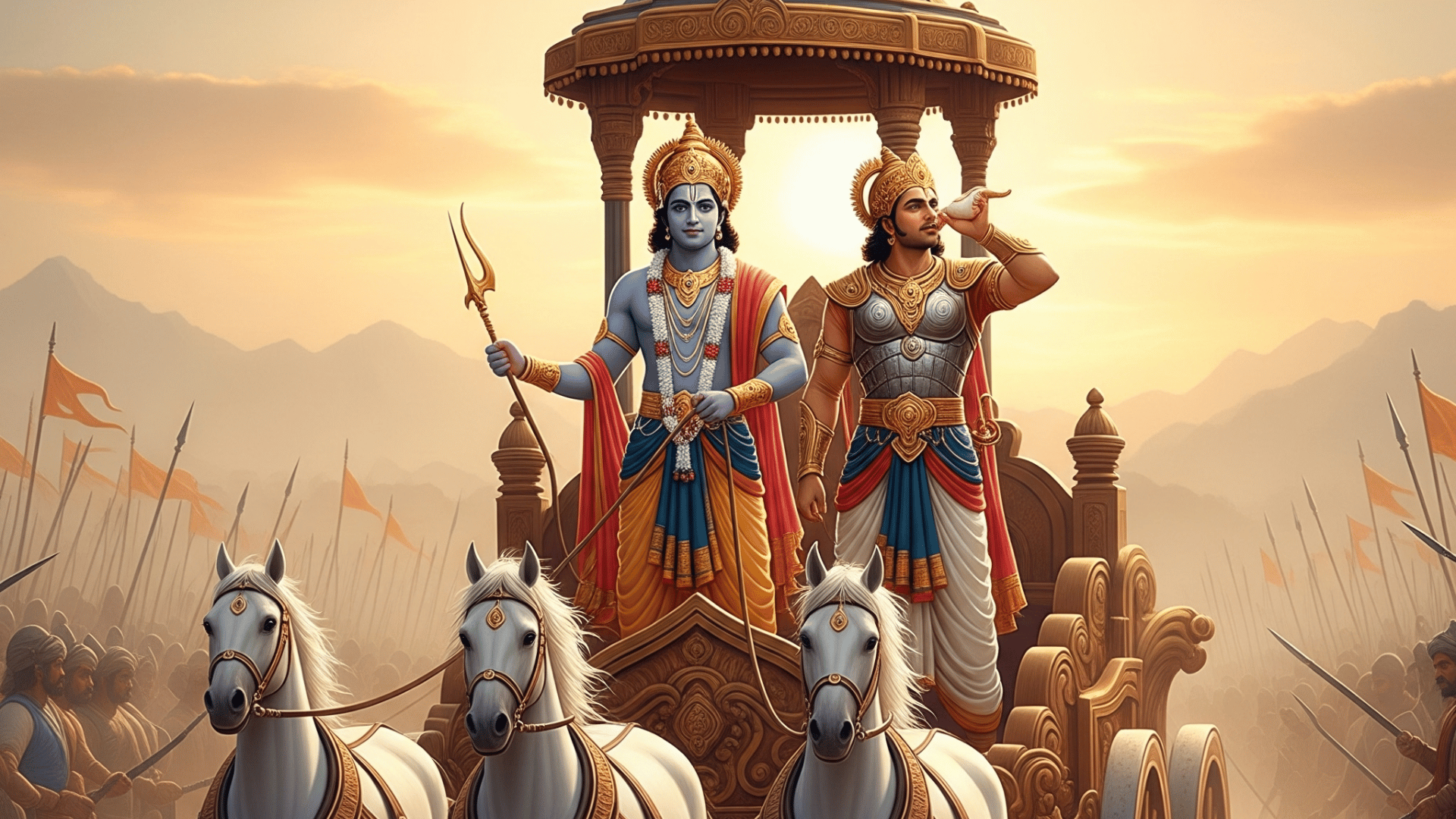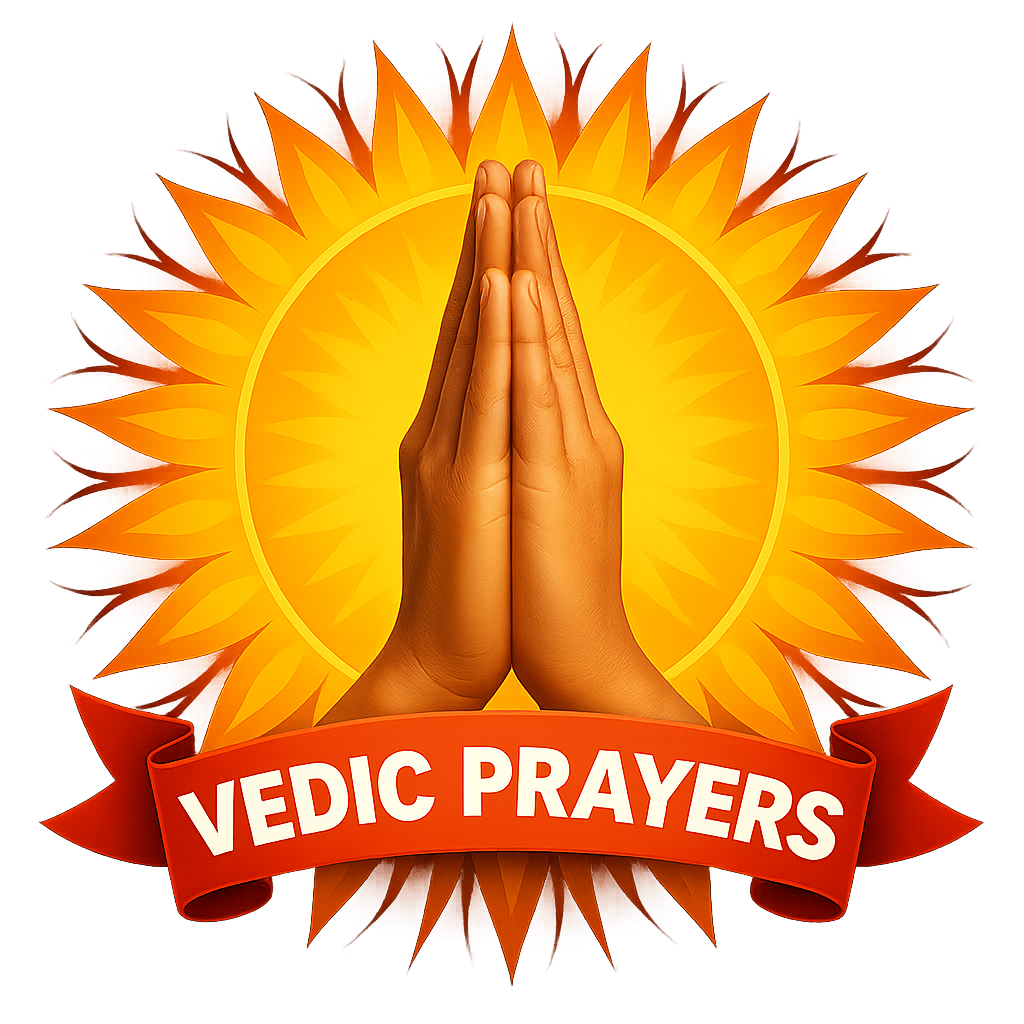
Chapter 1 – Arjuna’s Despondency
Verse 14
TatH, shwetaiH, hyaiH, yukte, mahti, syandane, sthitau,
MadhavH, PandavH, ch, ev, divyau, shankau, prddhmatuH ||14||
Literal Meaning:
After that, Lord Krishna (Madhava) and Arjuna (Partha), standing on a grand chariot yoked with white horses, blew their divine conches.
Detailed Interpretation / Explanation:
This verse depicts the conch-blowing that takes place just before the battle begins.
Both Arjuna and Krishna are mounted on a special, divine chariot drawn by white horses. White horses are considered symbols of purity, strength, and confidence.
Madhava, referring to Lord Krishna—an incarnation of Lord Vishnu—and Partha, meaning Arjuna, blew their respective divine conches as a declaration of war.
Here, the conch sound is not merely a physical or external signal; it also symbolizes a spiritual and sacred invocation.
The term “divyau shankhau” (divine conches) indicates that these were not ordinary conches, but possessed a special divine power or significance.
This shloka also conveys the seriousness, spirituality, and moral weight of the war — for while the Kaurava side had many mighty warriors, the Pandava side had Lord Krishna Himself as the charioteer of Arjuna, representing righteousness (dharma) and justice.
















